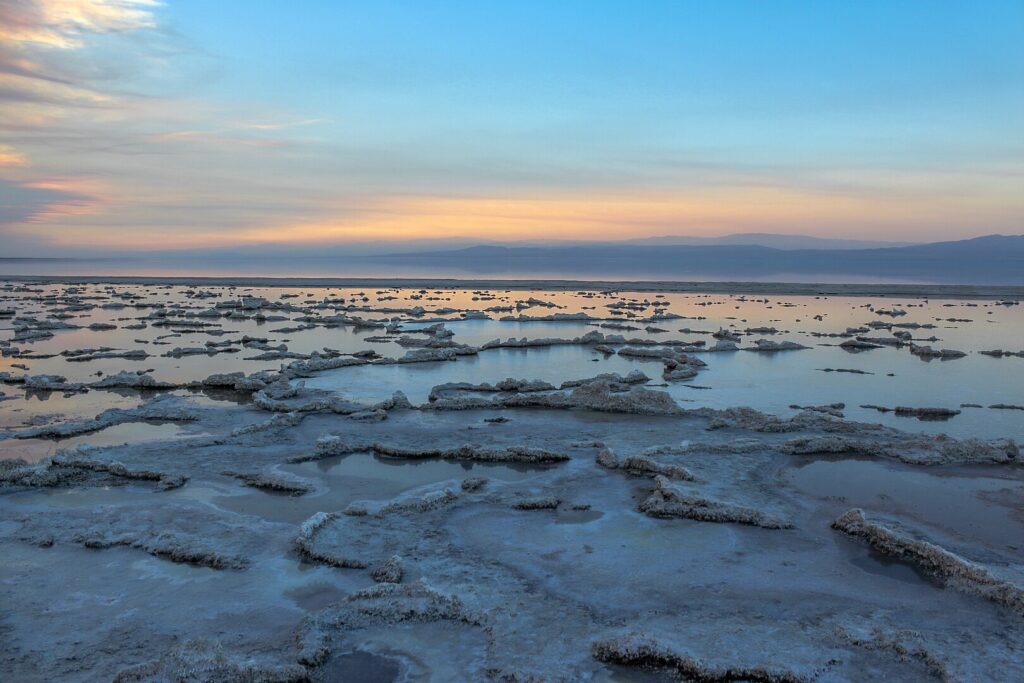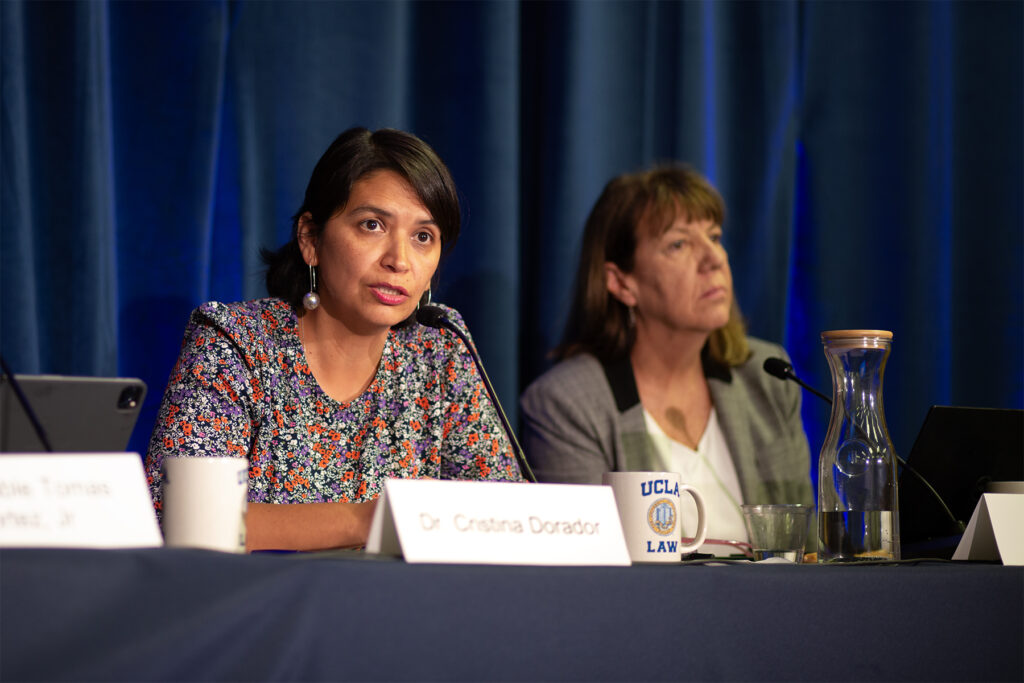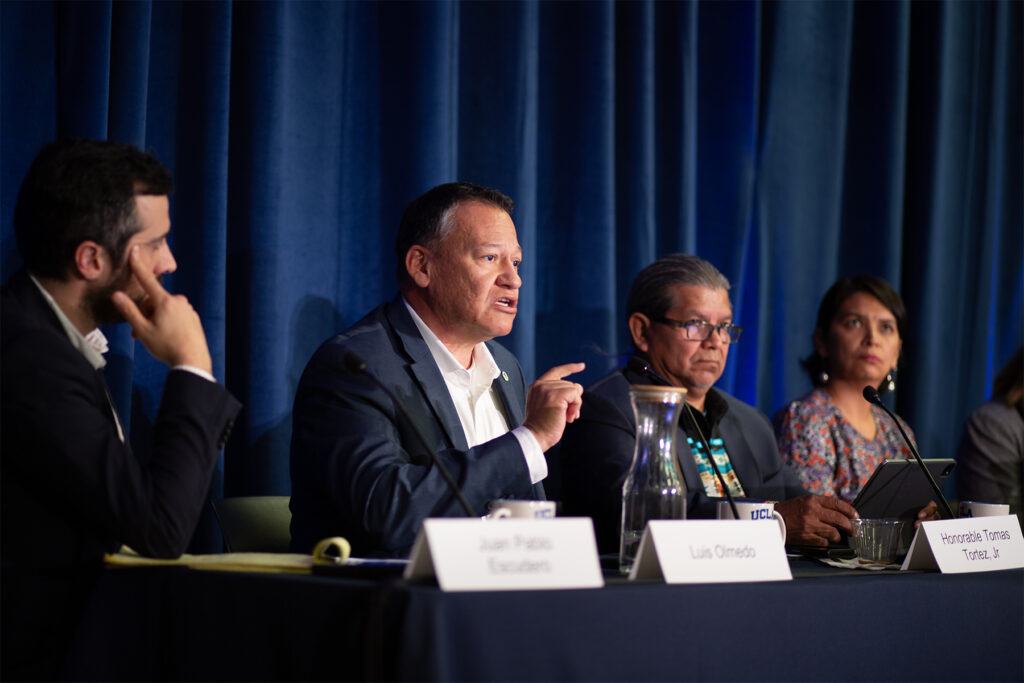Critical Insights on the Mineral Boom: Part II
A vision to ensure enforceable community benefits from mineral extraction: Insights from the Emmett Institute’s “Powering the Future” symposium.

“Voice, agency, and meaningful compensation.” Those are the things that California Tribal Affairs Secretary Christina Snider-Ashtari said must be granted in exchange to some communities bearing the brunt of the energy transition and the new mineral boom, as recounted in Part One of this series. All week, my colleagues and I are sharing summaries, outcomes, and insights from our recent “Powering the Future” symposium.
Panel Three, “Community Impacts of Critical Mineral Extraction,” explored this further and offered a potential path through the fascinating but fundamentally fraught issues at the center of this symposium. Over the course of the day, attendees and panelists grappled with the many challenges to obtaining minerals deemed critical to the energy transition and explored how to do so in a way that does not replicate the extensive harms of other more longstanding extractive industries. In Panel Two, Jingjing Zhang, from the Center for Transnational Environmental Accountability, set the audience up for Panel Three’s discussion of community impacts, asking the audience to grapple with the question, “critical to whom?”
Panel Three: Community impacts of critical mineral extraction
The overarching themes of Panel Three were an insistence on a) community benefits, rather than just consultation or mitigating impacts; b) shifting political power such that those benefits would be enforceable by communities impacted by critical mineral extraction, and c) the importance of learning and remaining clear-eyed about the impacts of the goods and lifestyles societally deemed critical. Panel Three’s speakers put forward a more robust vision of community engagement than the community consultation discussed in Panel Two, and perhaps most important, a vision that ensured enforceable community benefits.
Janet Wilson, Senior Environment Reporter at the Desert Sun and USA Today, opened Panel Three with an overview of the tensions at stake in the Imperial Valley and near the Salton Sea. She situated the audience in this geologically active region and summarized the recent recognition that the region’s underground mineral-rich brine contains lithium. She described the process by which the lithium can be extracted from the brine and noted that this kind of direct lithium extraction could generate fewer environmental harms that hard rock mining. She described the growing global interest in the area (newly deemed “Lithium Valley”) in pursuit of the “white gold” present in huge quantities. But all this, she reminded the audience, leaves out the people of Imperial. She briefly summarized the community advocacy in Sacramento to ensure community benefits, including a new University of California San Diego campus, as well as funding for a community managed environmental impact statement. Ms. Wilson concluded: “The promise is still there but the next few years will prove critical.”

Next, Dr. Cristina Dorador, a Chilean microbiologist who studies Chile’s salares, or salt flats, reminded the audience that all minerals are located in ecosystems: when we are talking about critical minerals, we are talking about the environment. She insisted on the need to put both communities and the environment at the center of the conversation around critical minerals. Dr. Dorador described the unique environmental conditions of the salares from which lithium is extracted. Salares are located at high elevation and receive the highest solar radiation on earth, which requires adaptions for the organisms who live there. These aquatic ecosystems are very variable, they have a very high biodiversity, and high endemism. As a result, they are considered fragile ecosystems—very small changes can produce massive impacts.
Dr. Dorador continued to explain that many of these areas are home to Indigenous communities who have lived in these areas for over 15,000 years, including Aymara, Quechua, Atacameño, Licanantay and Colla. She highlighted the contrast between the very positive narratives about lithium (it will “save the world”) and the unavoidable impacts lithium extraction will have on these communities and on the environment. Just as Jingjing Zhang’s “critical to whom” question forced the audience to investigate our own assumptions about the goods and energy we need and at who’s expense, Dr. Dorador’s discussion asked the audience to be clear-eyed about the impacts of the goods and energy we consume. She stated, “people need to understand how much damage is generated by the things we use every day.”

Luis Olmedo, an environmental justice leader in Imperial and the Executive Director of Comite Civico del Valle, Inc., brought the conversation back to California. He acknowledged the promise alluded to in Ms. Wilson’s discussion— “We’re excited too”— before providing context and a warning. Mr. Olmedo’s discussion reminded the audience, time and time again, that we are all connected. “We provide the majority of winter vegetables to your table,” he said, before describing how the agriculture industry has polluted the Imperial Valley and the industry’s preferential use of water has left water inaccessible to residents. Now, he explained, lithium extraction operations are expected to consume enormous quantities of water, while the people who live in the community can’t afford water. “We are in favor,” Mr. Olmedo said, “But we can’t afford it.”
Here Mr. Olmedo turned to the community benefits necessary to make these projects work. He described industry mitigating 100% of the pollution they generate and project-labor agreements to ensure good jobs for community members as a baseline. But community benefits shouldn’t end at jobs, he argued. Imperial has been underserved for over a century and is in need of housing, hospitals, schools, and other essential infrastructure. The minerals, meanwhile, are on public lands and they themselves are public patrimony, so there should be community profit-sharing. Citing the conservative refrain, “There are no free lunches,” Mr. Olmedo was firm: that applies to industry too. Before concluding, he returned to role of agriculture in Imperial describing the “very relaxed system” constructed to make sure the agriculture industry got everything it needed “so you all have food on your table.” Mr. Olmedo vowed that the lithium extraction industry could not have the same sweetheart deal. At the same time, he invited industry to come to the table to negotiate—but only if serious about real community benefits proportional to the economic benefit to the industry.
Honorable Tomas Tortez, Jr., Chairman of the Torres Martinez Desert Cahuilla Indians, began his discussion with a reminder of the devastation mining has wrought on Indigenous communities globally and offered a list of recent examples of tribes’ objections to the siting of lithium extraction being overturned in the United States. “It seems like we are invisible,” he stated. Honorable Chairman Tortez also highlighted California’s long history of mining, introducing the seal of California as a visual aid and drawing audience attention to the miner included in the image. California, he stated, was born on mining.

Shifting to his tribe’s experience, Chairman Tortez described a lack of broadband, lack of water infrastructure, and regular power outages including at the hottest times of year. Chairman Tortez also drew attention to the severity of air pollution in the region, citing a study that found biohazardous contaminants in the air. This matters for the development of the lithium industry, he explained, because it will bring in more trucks, more development, and more roads, all of which will likely exacerbate air pollution in the area. Chairman Tortez listed the companies that had sought to consult with the tribe regarding community development. Despite this initial interest, however, Chairman Tortez noted that meetings have become fewer and farther between, even while industry stakeholders reference a relationship with the Torres Martinez Desert Cahuilla Indians in the press. Like Mr. Olmedo, Chairman Tortez described state and industry actors as accepting engagement from the community, but despite this extensive participation, going ahead with the projects “without us” and failing to provide any kind of enforceable mandate to support the community. Chairman Tortez concluded that the tribe’s perspective is, “We don’t want to say [to our granddaughters and grandsons] that this once was a beautiful land, we want to be able say: This still is a beautiful land.”
Panel Three’s thoughtful discussion about enforceable and robust Community Benefits Agreements did not offer a simple solution, but it may have offered the only serious proposal we heard over the course of the day for how critical minerals mining might proceed in a way that does not simply reproduce the extractive and exploitative model we have seen in the past. Panel Three’s speakers’ insistence on enforceability and community benefits commensurate with the value industry will extract, and demand that the audience interrogate the collective consumption and lifestyle decisions that make these minerals “critical” offered both clarity and a generative point of reflection upon which to conclude the day’s panels.
This is the second in a series of summaries, outcomes, and insights from the Emmett Institute’s “Powering the Future” symposium.
Reader Comments
3 Replies to “Critical Insights on the Mineral Boom: Part II”
Comments are closed.







Please consider including Dr. Simon Micheux as an audience member, to add an additional dimension – The earth has not enough lithium and other exotic metal ores to complete the green transition. Will this destruction be for naught? Please see simonmichaux.com.
[Good point!]; but the REAL-POLITIK answer to your point is : “who cares, it’s a new investment and manufacturing race to the bottom again!” Hooray! You are too “woke”, talking about reality!
Having worked for the USEPA “SUperfund” enforcement program for 20-years an issue not identied is that the comapanies doing the mining/processing are LLCs. Mining company LLCs are created through stock offerings and carry heavy debt loads. Their revenues flow to investors and there are minimal financial reserves. Not if, but when there is a financial crises, the price of the mineral drops, there is an environmental disaster, the LLC escapes liability by declaring bankruptcy. The public’s claims are by and large, unsecured and, as there is little left after the lenders and lawyers get paid, the community, labor, the response costs, natural resource damages, water treatment etc., get little to nothing. The ONLY means to protect the public interests in these projects is a very, very, large financial assurance in cash in U.S. bank.